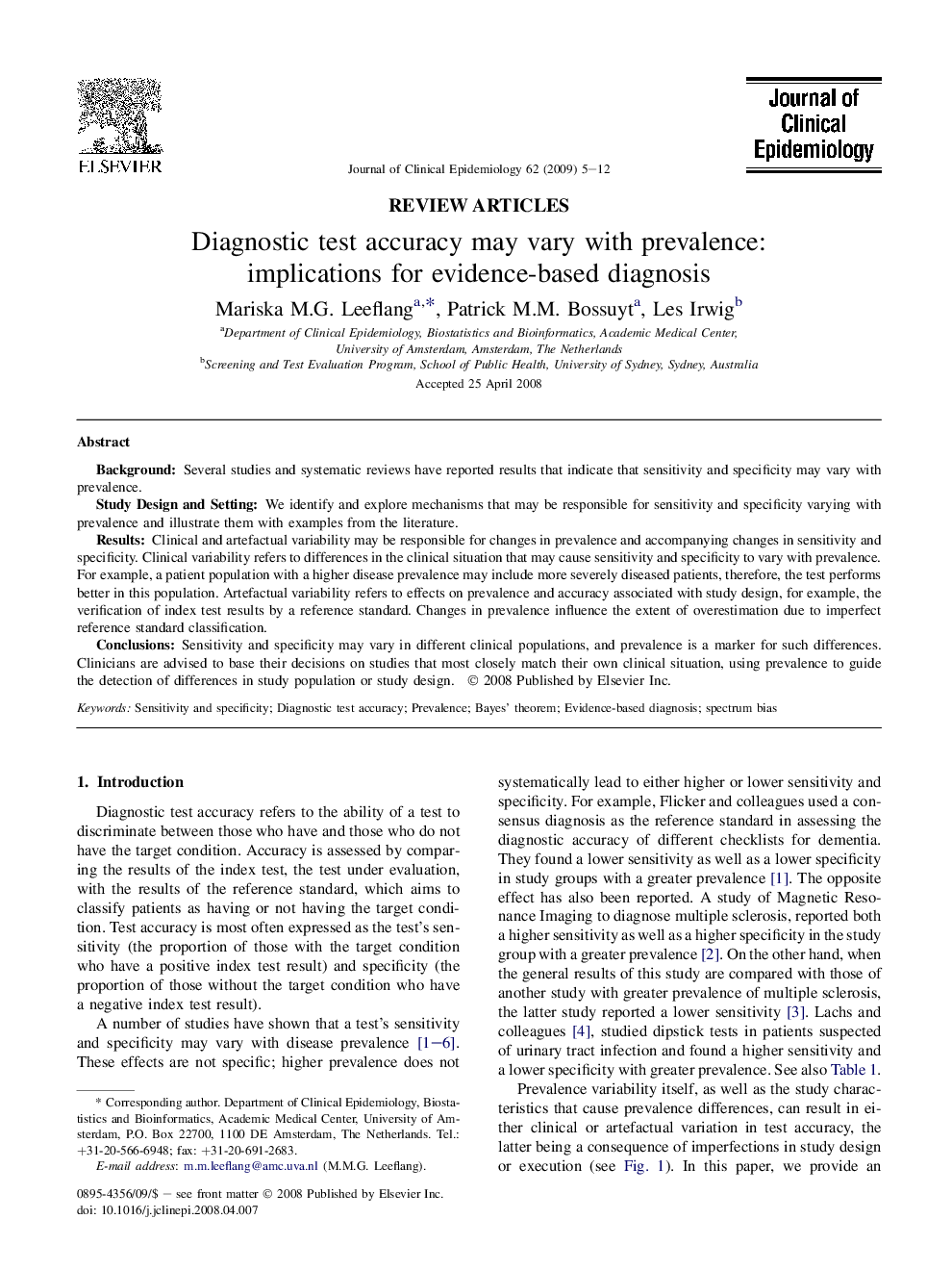| کد مقاله | کد نشریه | سال انتشار | مقاله انگلیسی | نسخه تمام متن |
|---|---|---|---|---|
| 1083738 | 951020 | 2009 | 8 صفحه PDF | دانلود رایگان |

BackgroundSeveral studies and systematic reviews have reported results that indicate that sensitivity and specificity may vary with prevalence.Study design and settingWe identify and explore mechanisms that may be responsible for sensitivity and specificity varying with prevalence and illustrate them with examples from the literature.ResultsClinical and artefactual variability may be responsible for changes in prevalence and accompanying changes in sensitivity and specificity. Clinical variability refers to differences in the clinical situation that may cause sensitivity and specificity to vary with prevalence. For example, a patient population with a higher disease prevalence may include more severely diseased patients, therefore, the test performs better in this population. Artefactual variability refers to effects on prevalence and accuracy associated with study design, for example, the verification of index test results by a reference standard. Changes in prevalence influence the extent of overestimation due to imperfect reference standard classification.ConclusionsSensitivity and specificity may vary in different clinical populations, and prevalence is a marker for such differences. Clinicians are advised to base their decisions on studies that most closely match their own clinical situation, using prevalence to guide the detection of differences in study population or study design.
Journal: Journal of Clinical Epidemiology - Volume 62, Issue 1, January 2009, Pages 5–12